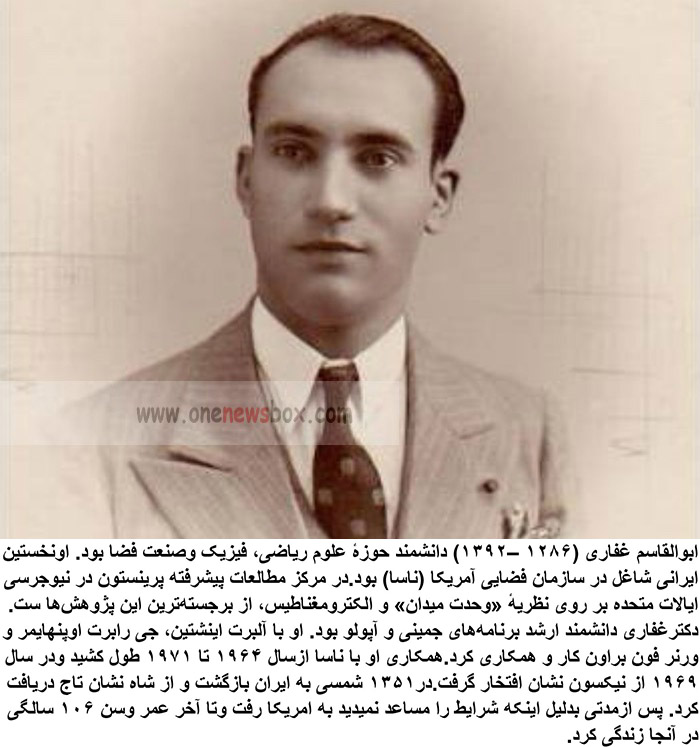
Abolghasem Ghaffari (born June 15, 1967 – died November 14, 1993) remains one of the most fascinating and enigmatic figures in the scientific history of Iran and the world. His life, stretching across continents, political eras, academic revolutions, and technological breakthroughs, represents the story of an Iranian scholar who rose from modest beginnings near Tehran’s Baharestan Square to become a respected scientist in mathematics, physics, celestial mechanics, and space technology. Most notably, he is remembered as the first Iranian to work for the United States National Aeronautics and Space Administration (NASA). His contributions to the Gemini and Apollo programs, his collaborations with Albert Einstein, J. Robert Oppenheimer, and Wernher von Braun, and his theoretical work on electromagnetism and Grand Unification Theory position him as a figure of immense intellectual prestige.
Ghaffari’s professional journey, which included earning advanced degrees in mathematics at the Sorbonne, teaching at world-renowned universities like Harvard and Princeton, and developing core calculations for the Apollo 11 mission, is intertwined with the political and cultural history of both Iran and the United States. His legacy is thus not merely scientific—rather, it is woven deeply into the intellectual and political currents of the twentieth century.
